As writers, it’s often cringeworthy to read and review one’s old work, especially works that were written decades ago. As Davidson College political scientist Shelly Rigger writes in Taiwan Studies Revisited: “Rereading one’s own previous work is a painful process, at least for me. I focus on the mistakes, the erroneous predictions, the word choices that I never would have made had I not been exhausted and on a deadline.”
But fortunately for the readers, this exercise in asking authors to revisit their books provides an illuminating account of how international academics viewed Taiwan back then and whether things developed according to their predictions. Although still academic in nature, it’s a rare personal look at what Taiwan meant and still means to these experts.
While some chapters are drier than others, the information and ruminations are still invaluable to interested parties, although something contemplative and autobiographical like this could have been a chance for some of these academics to try their hand at livelier writing. An example of this would be the late Bruce Jacobs’ The Kaohsiung Incident in Taiwan and Memoirs of a Foreign Big Beard, which is informative and engaging at the same time.
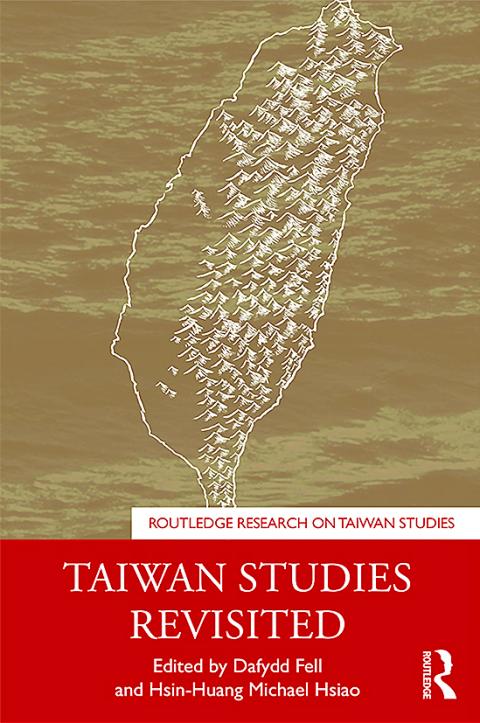
Although a fair amount of knowledge about Taiwan’s modern history is required to understand this book, the chapters are written in a way that one does not need to be familiar with the authors’ works. Everything is presented in chronological order, making it an interesting ride from the “Taiwan Miracle” during the 1970s to the Chinese Nationalist Party’s (KMT) return to power in 2008.
EXPLOSION IN TAIWAN STUDIES
One thing that stands out in the first half of the book is just how obscure Taiwan was back then, and how fast things have changed. In April last year, the Routledge Research on Taiwan Series, which this book is part of, reached its 10th anniversary. Series editor Dafydd Fell recounted to the Taipei Times how the field of Taiwan Studies has reached a golden age despite China’s attempts to marginalize Taiwan, and this book provides the tales of key figures who contributed to the country’s current interest in academia.
The first author, Hsin-huang Michael Hsiao (蕭新煌) is Taiwanese, but the others had to somehow stumble across the country lost in the sea of Chinese studies and then convince their superiors that it was worth paying attention to.
Thomas Gold, for example, started studying Chinese “on a dare” and ended up in Taiwan because it was difficult for Americans to visit China at the height of the Cold War. Even so he was planning on writing on China for his dissertation before changing his mind as US-China relations took a nosedive.
“I ended up in ‘Taiwan Studies’ — a subfield that didn’t really exist — purely by accident,” he writes.
Christopher Hughes writes that his book was the result of “being lucky enough to be in the right place at the right time,” recalling that a professor refused to let a student make a presentation on Taiwan in his Chinese politics class. Rigger was also planning to write about China when the Tiananmen Massacre took place and threw a wrench in her plans.
The contrast between the view of Taiwan between the US and UK is also intriguing, as the UK was one of the first countries to recognize the People’s Republic of China in 1950. While Gold came to Taiwan because he couldn’t visit China, Simon Long was able to study at Nanjing University in 1976.
Long’s impression of Taiwan differed from the image its American’s allies tried to present: “a nasty right-wing, repressive regime, run by a rather comically loopy and vindictive dictator and then by his son,” which is actually more accurate than the democratic and anti-communist beacon of “Free China.”
UNIQUE CULTURAL HERITAGE
Most of the chapters are generally about politics, but there are a few that explore other topics. Anru Lee (李安如) looks at the role of female laborers in the family, state and society in the 1990s and on the stigma of unmarried deceased women, Nancy Guy explores government sponsorship of Beijing Opera in Taiwan and Henning Kloter tackles written Hoklo (also known as Taiwanese).
Including these in the mix is important. While politics have dominated Taiwan’s recent history, it has a rich and unique cultural heritage and featuring it will help further separate it from Chinese studies and attract more people to the field.
One unique feature is where the authors are asked to respond to book reviews and reader comments about their publications, which makes the reflections more compelling, as Fell even reassesses his choice of “strange shade of green” for the cover of Party Politics in Taiwan.
The authors’ reassessment of their predictions are just fun to read as “what if” scenarios. For example, they didn’t expect the KMT to fall so quickly after Taiwan’s democratization. In 1991, Long predicted, “There is no reason to believe that in the foreseeable future, the DPP could achieve an electoral majority,” and Rigger also admits that she overestimated the KMT’s resilience and “ability to reinvent itself and thrive in the democratic period.”
Overall, it’s an eye-opening and intriguing read for those who have a deep interest in Taiwan’s politics and studies of the country in academia. But for the average reader who is looking to gain a deeper understanding of the subject, it’s better to start with one of the other volumes in the Routledge Research on Taiwan Series.
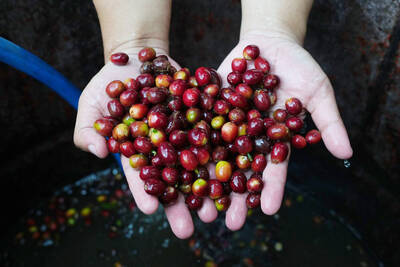
Climate change, political headwinds and diverging market dynamics around the world have pushed coffee prices to fresh records, jacking up the cost of your everyday brew or a barista’s signature macchiato. While the current hot streak may calm down in the coming months, experts and industry insiders expect volatility will remain the watchword, giving little visibility for producers — two-thirds of whom farm parcels of less than one hectare. METEORIC RISE The price of arabica beans listed in New York surged by 90 percent last year, smashing on Dec. 10 a record dating from 1977 — US$3.48 per pound. Robusta prices have
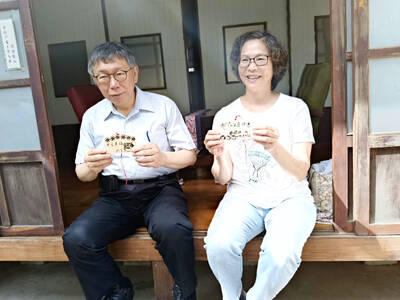
The resignation of Taiwan People’s Party (TPP) co-founder Ko Wen-je (柯文哲) as party chair on Jan. 1 has led to an interesting battle between two leading party figures, Huang Kuo-chang (黃國昌) and Tsai Pi-ru (蔡壁如). For years the party has been a one-man show, but with Ko being held incommunicado while on trial for corruption, the new chair’s leadership could be make or break for the young party. Not only are the two very different in style, their backgrounds are very different. Tsai is a co-founder of the TPP and has been with Ko from the very beginning. Huang has
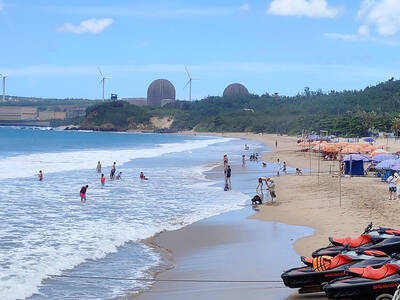
A dozen excited 10-year-olds are bouncing in their chairs. The small classroom’s walls are lined with racks of wetsuits and water equipment, and decorated with posters of turtles. But the students’ eyes are trained on their teacher, Tseng Ching-ming, describing the currents and sea conditions at nearby Banana Bay, where they’ll soon be going. “Today you have one mission: to take off your equipment and float in the water,” he says. Some of the kids grin, nervously. They don’t know it, but the students from Kenting-Eluan elementary school on Taiwan’s southernmost point, are rare among their peers and predecessors. Despite most of
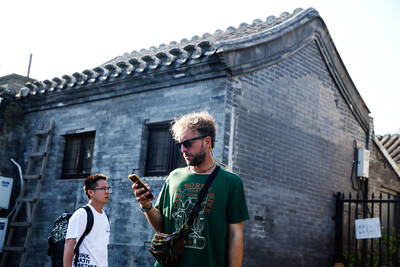
A few years ago, getting a visa to visit China was a “ball ache,” says Kate Murray. The Australian was going for a four-day trade show, but the visa required a formal invitation from the organizers and what felt like “a thousand forms.” “They wanted so many details about your life and personal life,” she tells the Guardian. “The paperwork was bonkers.” But were she to go back again now, Murray could just jump on the plane. Australians are among citizens of almost 40 countries for which China now waives visas for business, tourism or family visits for up to four weeks. It’s